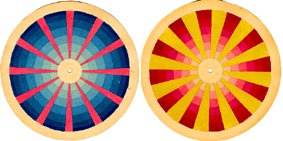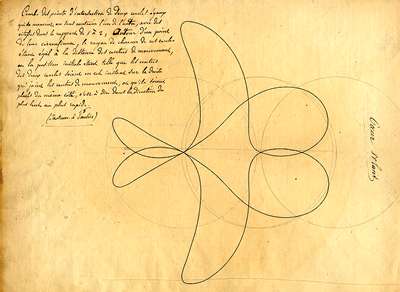After Joseph's studies at the "Atheneum", the lawyer Thirion, Joseph's
uncle and guardian, forces him to enrol in the University of Liège
in the Arts and Philosophy Faculty. On July 30th 1823 Joseph obtains the
diploma of Candidate in Languages and on July 31 that of Candidate in
Law. During these studies Joseph Plateau does a lot of things: he constitutes
an herbal, collects minerals, and above all develops a passion for chemistry.
He converts his rooms into a laboratory. He has health problems due to
chlorine fumes. His curiosity makes him attend some classes in the chemistry
department. He is so fascinated by what he sees that he makes a choice
for science and obtains the diploma of Candidate in Science on 26 October
1824. At that time he thinks of a future in chemistry. Because of ill
health, Thirion does not want to remain the guardian of the Plateau-children.
In 1827 J. Plateau becomes a teacher of mathematics at the "Atheneum"
school in Brussels. Though he is very busy he finds the possibility to
publish his first paper in Quetelet's "Correspondance". He writes "Construire
un angle équilatéral qui ait ses sommets sur trois circonférences
données".
111
 |
Discs
for the study of the mixing of colours J.Plateau, Collection J.Plateau, Ghent Two of the many discs used by Joseph Plateau to study the maximum of the colour-impression when colours are mixed due to the rotation of the discs. |
"Sur les sensations produites dans l'oeil par les différentes
couleurs" is his next paper. In it he proves that for each colour
there exists a density between the lightest and the darkest, which leaves
the maximum colour-impression in mixtures. This paper is the preamble
to his fundamental studies of visual perception. His approach to experiment
is very mathematical, as is demonstrated by his studies of the combination
of two curves revolving around their axis. He is so fascinated by these
constructions of locusses, that he draws several of them. Three are extant:
the most beautiful one bears the mention "Coeur volant" in the handwriting
of Plateau.
11111111
 |
Construction drawing
of the locus "Coeur volant" J.Plateau,
Collection J.Plateau, Ghent. Two parallel black surfaces, in which there are transparent mathematical curves, revolve in opposite sense at high speed. Their speeds are a multiple one of the other (1:2). When these discs are viewed against a luminous background then the varying intersections of the curves form a stationary curve about which Plateau says that it is a joy "de voir les courbes se dessiner dans l'air". |